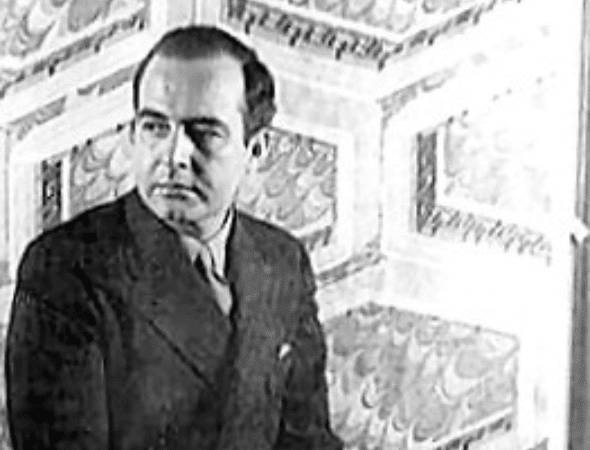BARBER: Symphony No. 1
by Jeff Counts
THE COMPOSER – SAMUEL BARBER (1910-1981) – The Curtis Institute of Music in Philadelphia was an artistic refuge for Samuel Barber from the age of 14, when he entered the youth program. He became a full-fledged student there after he graduated from high school and spent the next six years excelling as a pianist, baritone and composer. The latter of those three pursuits had been a clear path for some time, as evidenced by the absolutely adorable letter Barber wrote his mother when he was 9, in which he begged her not to make him play football. “I was meant to be a composer,” he told her, “and will be I’m sure.” Of course he was sure. He’d been writing music for two years already at that point. Barber went to Europe after Curtis and spent 1935-1937 at the American Academy in Rome.

THE HISTORY – Barber made two important contacts during his Curtis years, relationships that would remain essential to him for many years. Mary Curtis Bok, founder of the school and an astute observer of burgeoning talent, became a loyal patron and advocate who arranged for Barber to meet with the prestigious Schirmer publishing house. Gian Carlo Menotti was a fellow student at Curtis and two young men struck up a personal and professional bond that would last decades. Through Menotti, Barber discovered the artistic riches of Europe and endeavored to develop there the compositional voice that would win him acclaim in 1936. It was in Menotti’s native Italy that Barber found the time and space to complete his First Symphony, a work he had brought with him in sketch form to his two-year Roman residency. The premiere was given by Bernardino Molinari and the Philharmonic Augesteo Orchestra in the Villa Aurelia. Just one night later, in the very same venue, his String Quartet (yes, the one with the famous Adagio) would premiere as well. It was a big week for the 25-year-old American, but merely a taste of what was to come. Within a year the Symphony was on programs with the Cleveland Orchestra, New York Philharmonic, London Symphony and Vienna Philharmonic at the Salzburg Festival. “The form of my Symphony in One Movement,” he wrote in the program note for the New York concerts, “is a synthetic treatment of the four-movement classical symphony. It is based on three themes of the initial Allegro non troppo, which retain throughout the work their fundamental character.” Barber’s choice to cast his symphonic vision in a single unbroken statement was likely a purposeful reflection of Sibelius’ 7th and final symphony, which did the same to equally intense effect in 1924. Neither avant-garde nor folk-indebted, Barber’s music, like Sibelius’, stood apart then, and still does today.
THE WORLD – Elsewhere in 1936, Construction on the Hoover Dam was completed, Jesse Owens won four gold medals at the Berlin Summer Olympics, Syria signed a treaty of independence with France and Federico Garciá Lorca was murdered by Spanish Fascists.
THE CONNECTION – Utah Symphony last performed Barber’s Symphony No. 1 during the 2003-2004 season. Scott O’Neil was on the podium.












